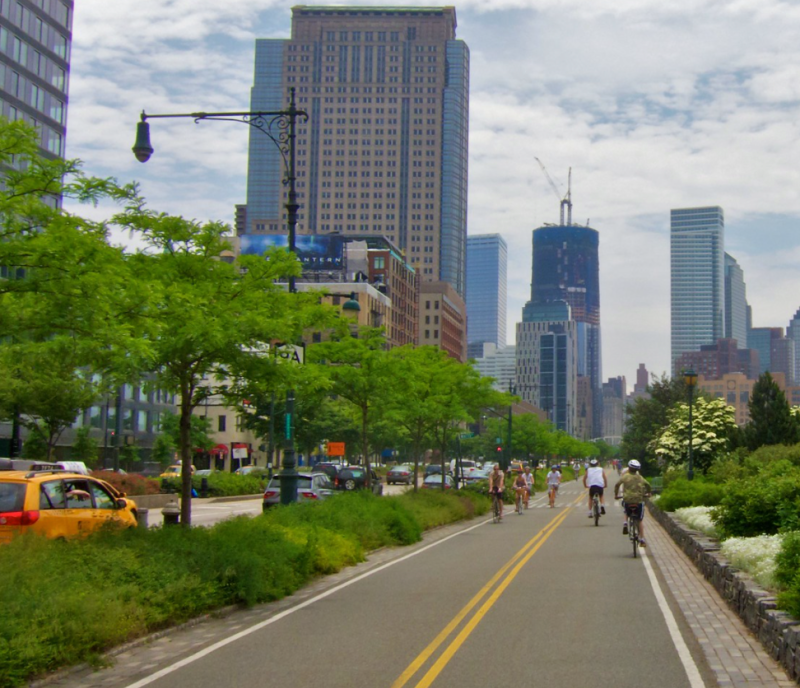Gas taxes on off-road recreational vehicles alone bring in three times more federal revenue than is spent building the trails themselves, a new federal study finds — and that's before factoring in all the money that the users of non-gas-powered vehicles save highway agencies by opting not to drive.
But rather than doing what's fair — tripling funding for trails to at least $250 million a year — the latest Senate infrastructure bill would maintain the status quo.
According to a long-delayed new fuel study from the Federal Highway Administration, users of snowmobiles, all-terrain vehicles, and other off-road automobiles pay an estimated $281 million into the Highway Trust Fund via gas taxes every year — a staggering sum that advocates say was more than 10 percent higher than early estimates, and which doesn't even account for the massive economic benefits of non-motorized travel that takes place on the same paths every day.
But under the federal government's current surface transportation reauthorization bill, the FAST Act, the Recreational Trails Program gets just $84 million a year — not nearly enough money to maintain, much less expand, the vast network of urban greenways and critical rural transportation connections which the program funds. Contrary to what the name might suggest, the Recreational Trails Program is a versatile initiative responsible for funding many key transportation arteries for non-drivers, including segments of the Empire State Trail that run through New York City; about 30 percent of program funding is specifically allocated towards non-motorized transport, with a further 40 percent devoted to mixed-use paths.
"It's always been the assumption of this program that money paid by trail users should be used for the benefit of trails — whether they're filling up a gas tank or not," said Marianne Fowler, senior strategist for policy advocacy for Rails-to-Trails Conservancy. "That's never been particularly controversial. Snow-mobilers say all the time that they ride on these trails in the winter and bike and walk on them in the summer."
The trail community has long been united in the notion that the Recreational Trails program deserves more funding than it gets, but Washington has dragged its feet on figuring out exactly how much it's actually due. The new fuel study was requested by Congress back in 2019 in anticipation of the FAST Act expiring in September, 2020, but only arrived on July 29 — the same day that lawmakers in Washington brokered a controversial new reauthorization deal that would inject a historic $110 billion into new highway spending, but is anticipated to maintain funding for trails only at current levels.
That means that while the Senate barrels towards a rushed vote, active transportation leaders are scrambling to pass an amendment that would finally give the trail system what it deserves — and if they can't, it may leave the program critically underfunded for the next five years.
"If we aren’t successful in passing an amendment to fully fund the Recreational Trails Program, we’ll in essence be leaving between $166 and $200 million every year on the table that could otherwise have been invested in important trail infrastructure across the country," said Brandi Horton, RTC's vice president of communications.
With proof in hand that the trails community is already more than pulling its own weight, advocates say that $250 million a year isn't too much to ask for — and it's only a start.
"It's a piece of unfinished business," added Fowler. "Even before we had the fuel study, we knew trails were underfunded. Now we know exactly how much. "
Editor’s note: After this story was published, perspectives were shared with us about ways to fully fund both the Transportation Alternatives program and the Recreational Trails Program, which currently share resources under the Surface Transportation Block Grant Program. Check out this op-ed from Safe Routes to School’s Marisa Jones for more.





